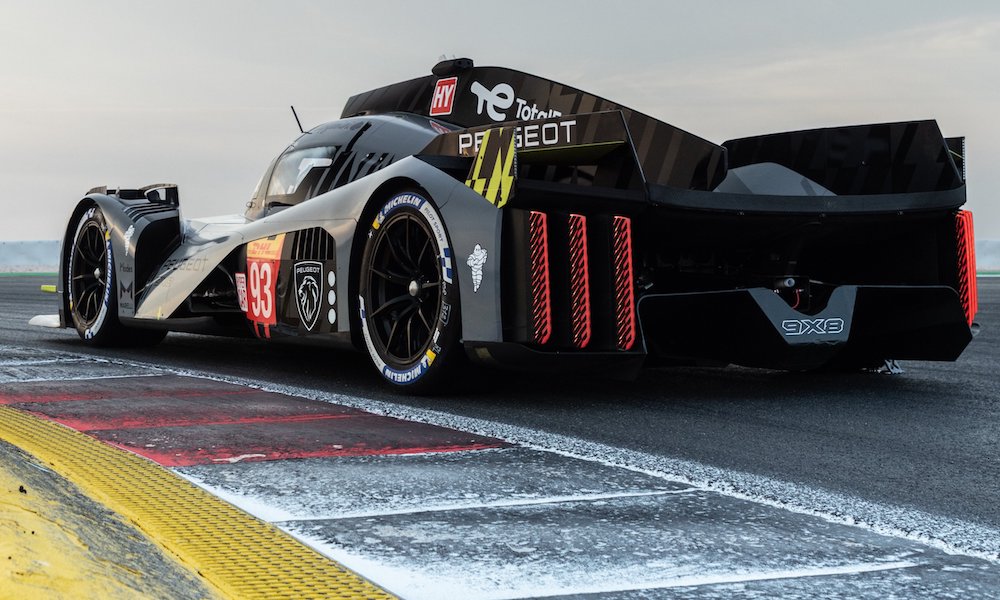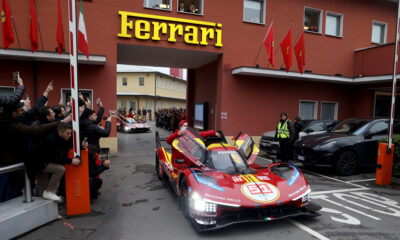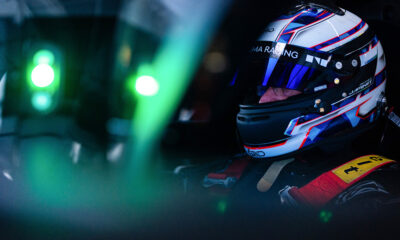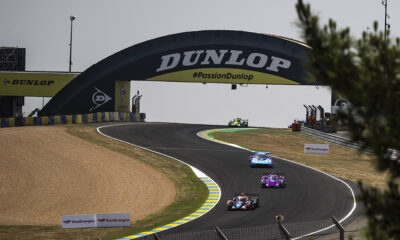Peugeot is in the “final stages of homologation” for its LMH car that will make its FIA World Endurance Championship debut in July, according to the manufacturer’s technical director Olivier Jansonnie.
The final racing version of the Peugeot 9X8 was revealed on Friday with some modifications from the initial concept version that was unveiled at Monza last July.
Jansonnie said during the latest project update during a test at Portimao that while further track running is planned, the development team is happy with where the car sits in terms of design and operation.
Of note, the four-wheel-drive hybrid prototype will enter competition without a rear wing as originally planned, but with some new aerodynamic features added to help generate the required downforce levels.
The Peugeot 9X8 is set to debut at the 6 Hours of Monza, round four of the WEC season.
“We have believed in this concept for some months now: it has been a long time,” Jansonnie said.
“We [have been] working on this concept and we have improved it. We were just missing the final validation on track.
“That’s done now, it will have no rear wing, and it will start racing without the rear wing.
“We have been testing the car since the end of last year. We have done more than 10,000 km of testing in different locations. It’s a lot, still not enough for us. We always like to do more.
“I think we will carry on in the next weeks to try to test as much as we can, before we go racing. It’s a lot of testing: very hard and tough on the team.
“In the meantime, we have been through the homologation process for the car.
“We have been crash testing our front crash box and the monocoque. The rear structure, steering column and battery have also been crash tested. Now we are doing the final stages of homologation and inspection.
“Hopefully the car will get homologated in the next weeks.”
Jansonnie described the changes to the vehicle’s design in recent months as “subtle”.
Contrasting with the concept car, the central ‘shark’ fin has been enlarged, while the air intake in front of the fin is now a triangular shape rather than trapezoid.
Small vertical fins have been attached to each side of the car’s rear end. Additionally, the wing mirrors now extend out from behind the wheel arch after initially being fully embedded into the architecture.
“Typically we had to change some things a little bit to legalize the car,” Jansonnie said.
“A good example is the headlights, for instance. We managed to keep the Peugeot signature on the lights with the three claws, but we have had to re-arrange the clusters to make them more legal.
“They were not in the same order on the car you saw some months ago. And then we have some more aero shapes on the car, to fit into the Balance of Performance window.
“The shark fin is a bit bigger. We have lateral fins on the car, which we had to do to legalize the car.
“We had to demonstrate with some simulations that the car is stable.
“That is quite an interesting and complicated part of the regulations, and that created all of the extra elements on the car.”
Peugeot company CEO Linda Jackson described the final racing version of the Peugeot 9X8 as a “more mature” product than the one that started testing five months ago.
“I think we’ve really delivered on the promise to take the morphology of the concept and move it into a race car,” she said.
“I saw it at the first sessions, back in December, and then I went to the tests in March at Magny-Cours. I saw it in a slightly different way.
“For me, I saw the car was more mature. But the team had changed: they have become a team, and a really cohesive team. Now, they’re a racing team and they want to race.”
Head of Stellantis Motorsport Jean-Marc Finot added that the 10,000 km of test mileage has taken place over 25 days at circuits in Europe.
“We are now close to being at the end of fixing any issues,” he said. “We are working on the setup and balance optimization of the car.”



























